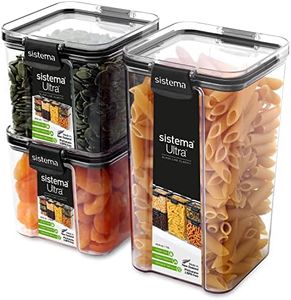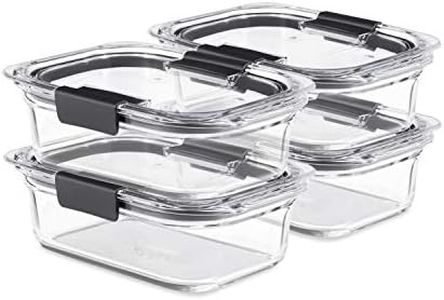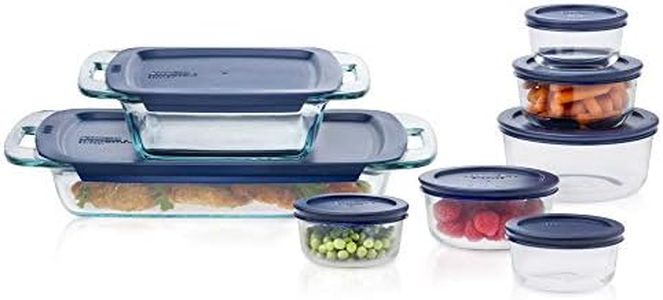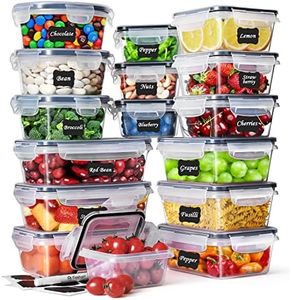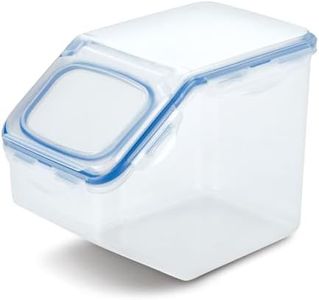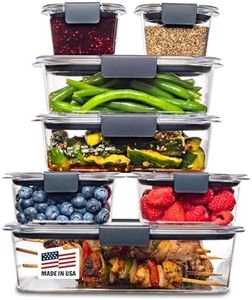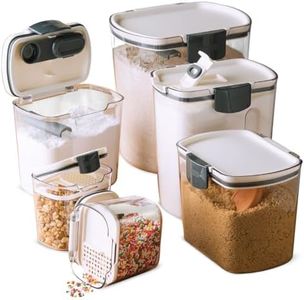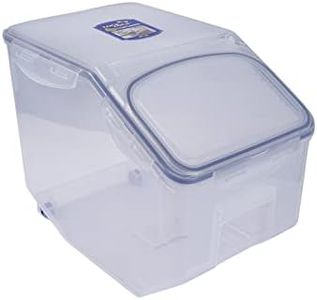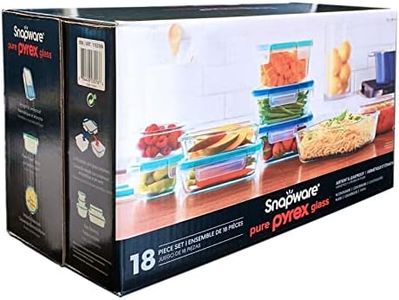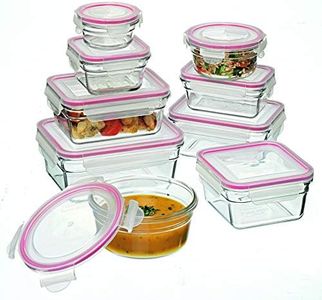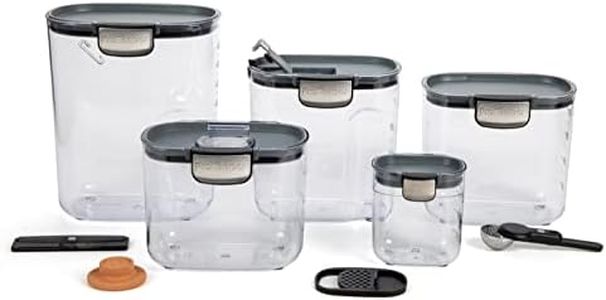We Use CookiesWe use cookies to enhance the security, performance,
functionality and for analytical and promotional activities. By continuing to browse this site you
are agreeing to our privacy policy
10 Best Airtight Containers
From leading brands and best sellers available on the web.Buying Guide for the Best Airtight Containers
Shopping for airtight containers is all about keeping your food fresh, preventing leaks, and making storage easier. The right container will protect your food from air and moisture, which helps it stay fresh longer. Since there are many shapes, sizes, and types of airtight containers, it's important to understand the most important features so you can match them to your storage needs.MaterialAirtight containers are typically made from plastic, glass, or stainless steel. The material affects durability, safety, and how the container can be used. Plastic is lightweight and usually less expensive; glass is heavier, doesn't stain or retain odors, and is microwave-safe; stainless steel is very durable and best for dry storage but usually not see-through. If you need something light for lunches or short-term storage, plastic might be best. For long-term storage or if you want to avoid chemicals, glass is a good choice. Stainless steel is ideal when you need strength and don’t mind not seeing the contents.
Sealing MechanismThe sealing mechanism is what makes the container airtight—this can be a silicone gasket, a snap-lock lid, or a screw-top. The importance is that it keeps air out and freshness in. Snap-lock lids are easy for most people to use and give a clear sign they've sealed; gasket seals (like rubber rings) give extra protection against leaks. If you plan to store liquids, make sure the seal is strong and tested to prevent spills. For everyday dry food storage, a simple snap or twist closure might be enough.
Size and ShapeAirtight containers come in many sizes and shapes to suit different storage needs. If you need to store large quantities, look for big, stackable containers. For small snacks or leftovers, smaller containers are better. The shape matters too—rectangular shapes generally fit better in cabinets and refrigerators, while round ones can be easier to clean. Think about what you'll be storing and where you'll be putting it. Choose a set with a variety of sizes if you need flexibility.
Ease of CleaningSome airtight containers have many parts or seals that can be tricky to clean. Containers that are dishwasher-safe save time and effort. Simpler designs with fewer nooks and crannies are easier to keep sanitary. If you plan to use the container frequently, prioritize ease of cleaning to avoid hassles and keep your food safe.
Stackability and StorageStackable containers or those that nest inside each other can save a lot of space in your kitchen. If you have limited pantry or fridge space, look for containers specifically designed to be stacked securely. Think about where you’ll store them when not in use; compact sets are usually easier to organize.
Odor and Stain ResistanceSome materials absorb odors and get stained easily, especially when used for strong foods like curries or tomato sauce. Glass and high-quality plastics resist stains and odors better. If you plan to store pungent or colored foods, look for containers that specifically advertise resistance to odor and stains, or choose glass.

